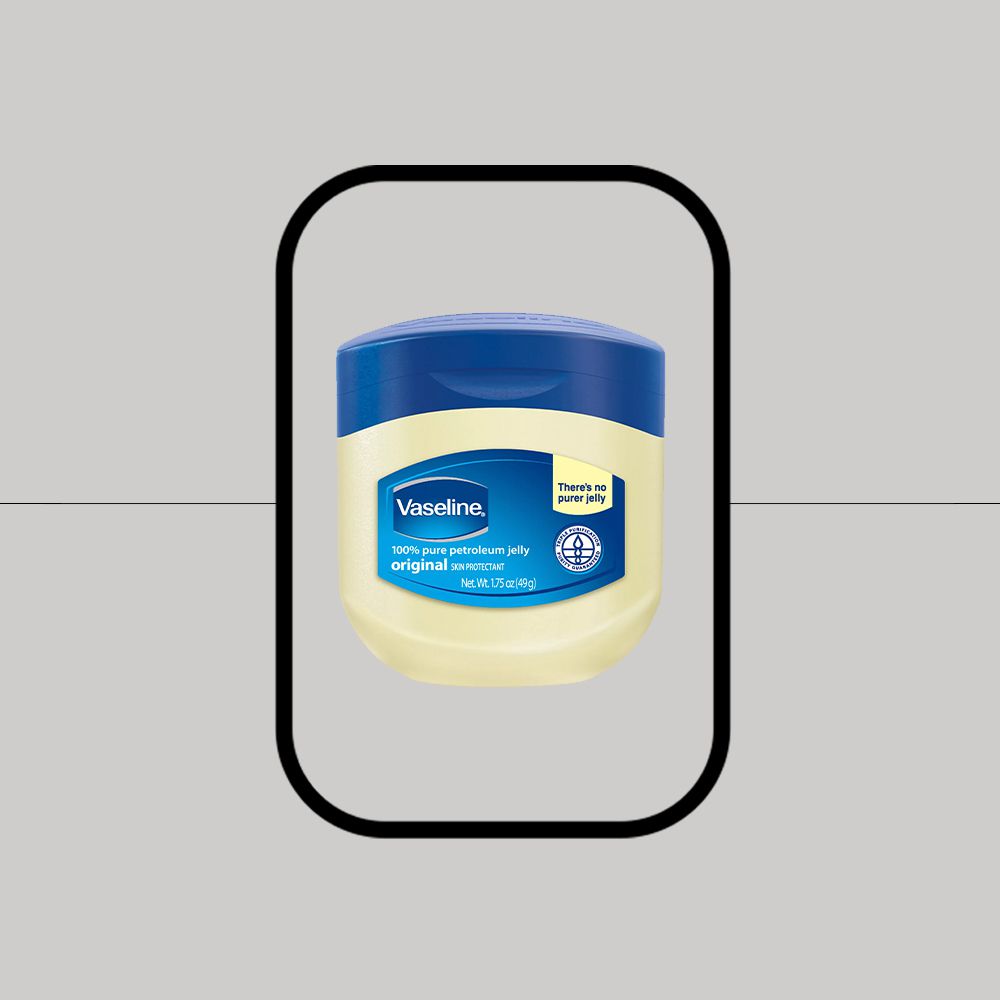Whenever I see someone with oily skin I wonder what it’s like to have a functioning barrier. Growing up, between Clarisonics, astringents and Noxzema, American teens were taught the key to “good skin” was to rub off all traces of oil. As someone with genetically dry skin, this philosophy did me no favors and I avoided skincare altogether. It took my French godmother (my marraine) to teach me a better way. I now spend most of my skincare routine trying to build my moisture barrier.
I don’t know what prompted it, but one day my marraine handed me a tin of Nivea cold cream. I’ve always had skin that feels tight and a little itchy, particularly come wintertime. Whatever the reason, popping open the iconic blue tin, I had no idea I was staring at the precursor to my holy grail for smoother, more moisturized, and less irritated skin; slugging.
The term appears to originate from a 2014 post on Reddit. While Vaseline appears to be used in some tutorials around glass skin and is a well known secret not only to K-Pop stars but celebrities in the U.S., the first article attributing slugging to K-Beauty in 2018 doesn’t have a citation thus it cannot be confirmed that this is the origin. It’s also important to note Black women have been using Vaseline as part of their skincare routines for generations.
According to the popular Reddit post, slugging is the act of taking petrolatum or Vaseline, coating your face in it and waking up reborn. While my marraine never handed me a vat of Vaseline, Nivea is a blend of petrolatum (Vaseline), mineral oil, and glycerin—basically a slug with benefits.
What Is Slugging?
Slugging is a skincare trend which includes coating your face in petrolatum or Vaseline. This is meant to prevent transepidermal water loss and keep moisture in your skin. It’s best for dry skin types.
Slugging, Explained
Dr. Ranella Hirsch, a board-certified dermatologist in Boston and former president of the American Society of Cosmetic Dermatology, notes Vaseline’s main ingredient, petrolatum, is safe to use on skin. Despite what you may read on the internet, the ingredient is so safe that the American Academy of Dermatology recommends it for use on small babies with eczema. As to whether you should put it on your face, Hirsch explains that “some people may find it too occlusive for their tastes” but it’s not a question of safety, it’s a matter of whether you’re into looking like you’ve dunked your face into a vat of Crisco. For the record, that’s my aesthetic.
As I’ve gotten older, I’ve graduated from Nivea and gotten my masters in petrolatum. Most nights, particularly in the winter when I’m finished with my routine, I use a pea-sized amount of petrolatum over my face as a final step. I find it makes my moisturizer work harder, my skin’s less tight, and it doesn’t budge my skincare routine as much as cold cream. Dr. Angelo Landriscina, a New York-based dermatologist confirms petrolatum does help dry skin. The balance of keratinocytes (skin cells) and lipids are crucial for your barrier. Lipids are the glue that keep your stratum corneum, or outermost layer of skin, intact. Without the lipids, your skin is compromised—as less lipids in the skin leads to transepidermal water loss. When the lipids in your skin are depleted, whether it be by your genetic lottery, the environment, or an overenthusiastic peel, the glue is damaged and your protective barrier lets out water. Petrolatum can fix that.
Meet the Expert
- Dr. Ranella Hirsch is a board-certified dermatologist in Boston and former president of the American Society of Cosmetic Dermatology. She is an author of the dermatology textbook Aesthetic Regional Rejuvenation.
- Dr. Angelo Landriscina is a New York-based dermatologist, award-winning scientific researcher, and medical writer.
- Dr. Camille H-Verovic is a dermatologist based in New York City and the founder of GIRL+HAIR, an innovative multicultural hair care brand.
The Advantages of Slugging
Dr. Landriscina explains that Vaseline acts like an occlusive and a skin protectant, helping prevent 99% transepidermal water loss. It’s important not to seal your skin completely for long periods of time—so, “that 1% TEWL speaks to the advantages of petrolatum over other occlusives that just form an impermeable barrier on top of the skin,” Landriscina explains. Apparently, you want some water loss as it “acts as a signal that tells your skin to produce more intercellular lipids thereby repairing the skin barrier.” If you fully block your skin, when you remove the occlusive, your skin reverts back. According to Landriscina, “Petrolatum prevents most water loss while allowing your skin to repair its barrier, leaving it better off once the petrolatum is removed.” Translation: A slug is born.
:max_bytes(150000):strip_icc()/slugging-embed-grid_COURTESYOFAUTHOR-eeb754deac98427f8c3f9ce369664231.jpg)
:max_bytes(150000):strip_icc()/slugging-embed-grid_COURTESYOFAUTHOR-eeb754deac98427f8c3f9ce369664231.jpg)
While you don’t have to worry about petrolatum being comedogenic, if you are acne-prone or acne-prone with sensitive skin, Dr. Camille H-Verovic, a dermatologist based in New York City, notes it’s best to avoid not just petrolatum, but anything that’s occlusive. H-Verovic explains, “I would not recommend occlusive ingredients to someone with acne.” The issue, H-Verovic notes, arises when we make sweeping statements, something she is cautious of. Making broad generalizations like “x ingredient will cause x,” per H-Verovic, doesn’t take into account the nuances in your personal skin. Her advice? “Consider why you’re using an occlusive like petrolatum.” In my case? My skin is thirsty, and I’ll trap whatever I can get.
The Science Behind Slugging
One of the biggest barriers to using Vaseline has little to do with efficacy and actual safety and more to do with perceptions. Why does an ingredient dermatologists recommend for babies have such a bad wrap for being “toxic”? Clean beauty is partly to blame. The EWG or Environmental Working Group ranks petrolatum as a “1-4” due to contamination concerns and The Campaign for Safe Cosmetics has a post that, without context, would make you think that most petrolatum causes cancer.
The Campaign for Safe Cosmetics (TCFSC) claims that “petrolatum is often not fully refined in the US.” As we’ve established, this is not true. The U.S. has regulated and tested petrolatum since the ’60s, and it has long been recognized as a skin protectant by the FDA. TCFSC goes on to note ”it can be contaminated with toxic chemicals called polycyclic aromatic hydrocarbons (PAHs).” While studies have shown that PAHs are linked to breast cancer, petrolatum is not listed as a potential source, whereas tobacco smoke and smoked and grilled foods are.
The Bottom Line
The reality is, in the U.S., products with 30 to 100% petrolatum are considered skin protectant drugs and are subject to FDA regulation and registration on NDClist.com. Any over-the-counter drug like sunscreen, hand sanitizer are considered OTC drugs and must register with the FDA to receive a unique NDC code for consumers. As petrolatum is recognized by the FDA as a proven skin protectant, like colloidal oatmeal, any product with over 30% petrolatum must register. This unique code identifies your brand and the factory that produces it making it easy to find vetted products. While you won’t find brands under the 30% petrolatum mark on the website, parent companies are a good indicator of business practices. Why? Factories that follow GMP or Good Manufacturing Practices register with the FDA, as the FDA does routine checkups with factories, they don’t want to lose their license. Translation? They aren’t peddling contaminated petrolatum.
Another way to make sure your petrolatum is safe? Ask the brand for their “USP”— the factory will have it and some brands, like Vaseline, indicate it on their packaging. If a brand is using “USP” petrolatum they meet or exceed the requirements set by the United States Pharmacopeia meaning it’s safe for food, drug, or medicinal use. However, the easiest way to determine the purity of your petrolatum is via NDC listings and NDClist.com. Some of my favorite brands include Vaseline, CeraVe, and Aquaphor (which is the same company that owns Nivea ).
Don’t want to use Vaseline? La Mer uses mineral oil which is another popular petroleum byproduct that’s effective for skin. Worried about sustainability? The reality is we have a long way to go to make the skincare industry less reliant on fossil fuels. As long as farms and processing facilities use gasoline to harvest plants and power factories, using a byproduct of the petroleum industry isn’t what’s keeping big oil afloat. Shea butter, rosehip oil, and plant-based products all require oil to make it to shelves. As always, it’s personal preference. For me, I’m going to continue living my best slug life.
How to Heal Dry Skin Around the Nose, Once and for All










